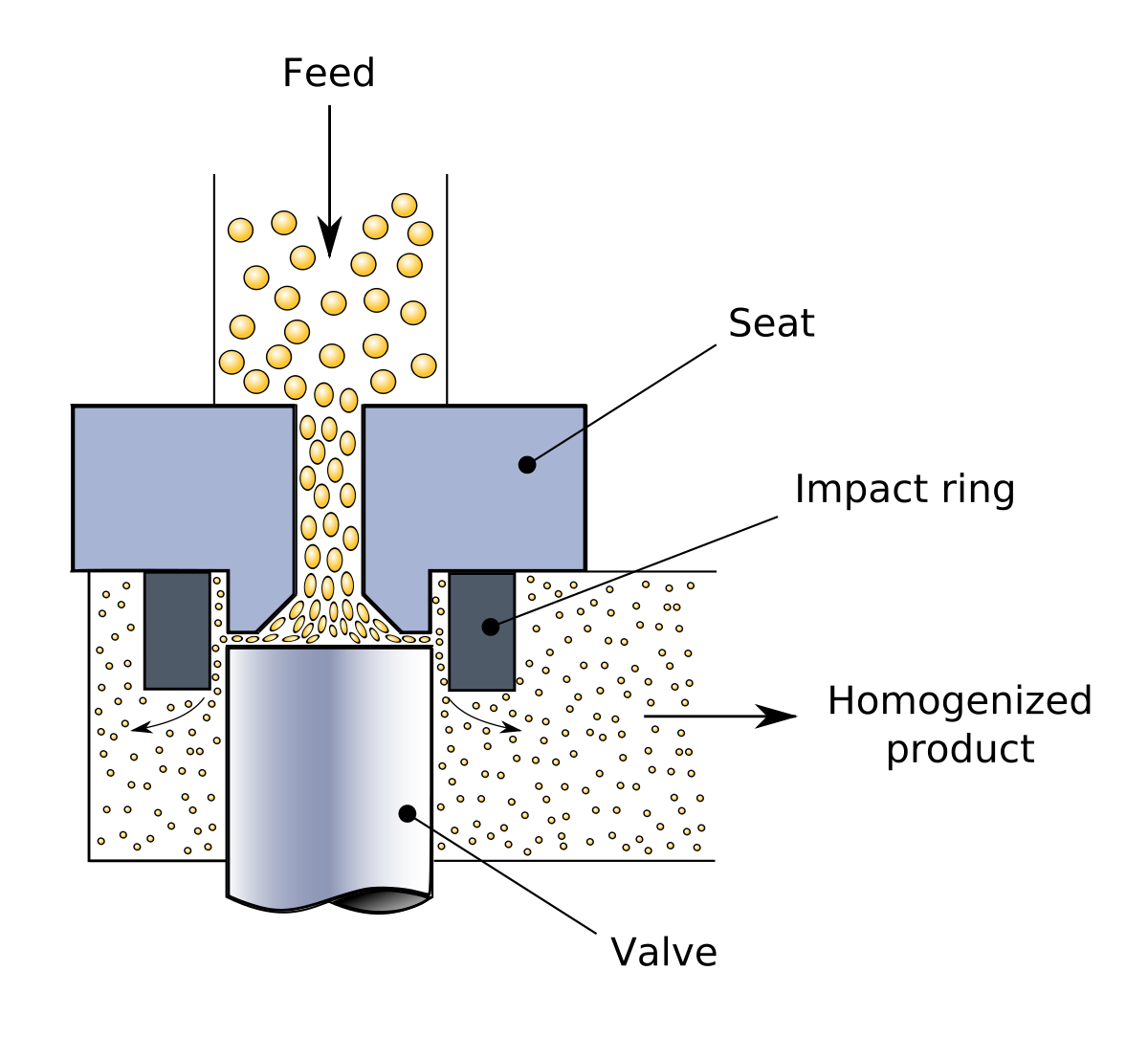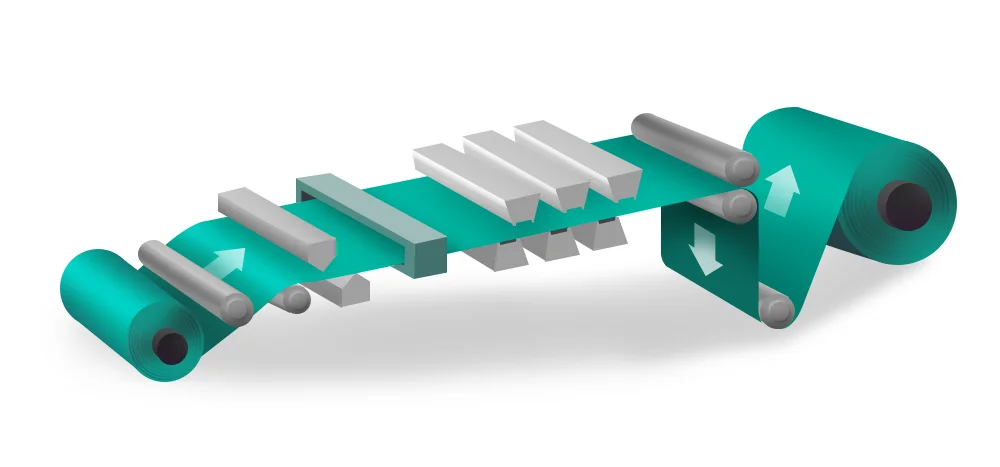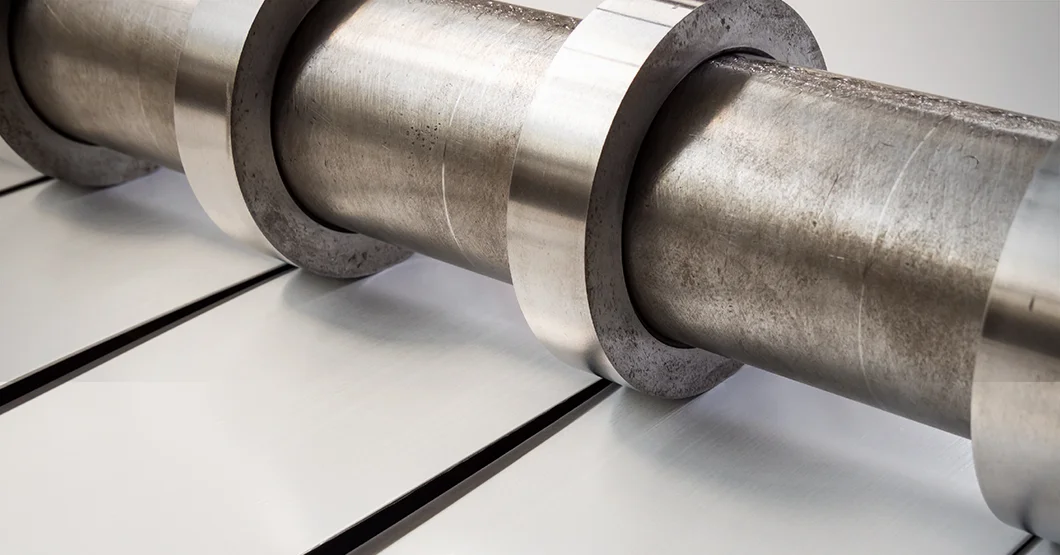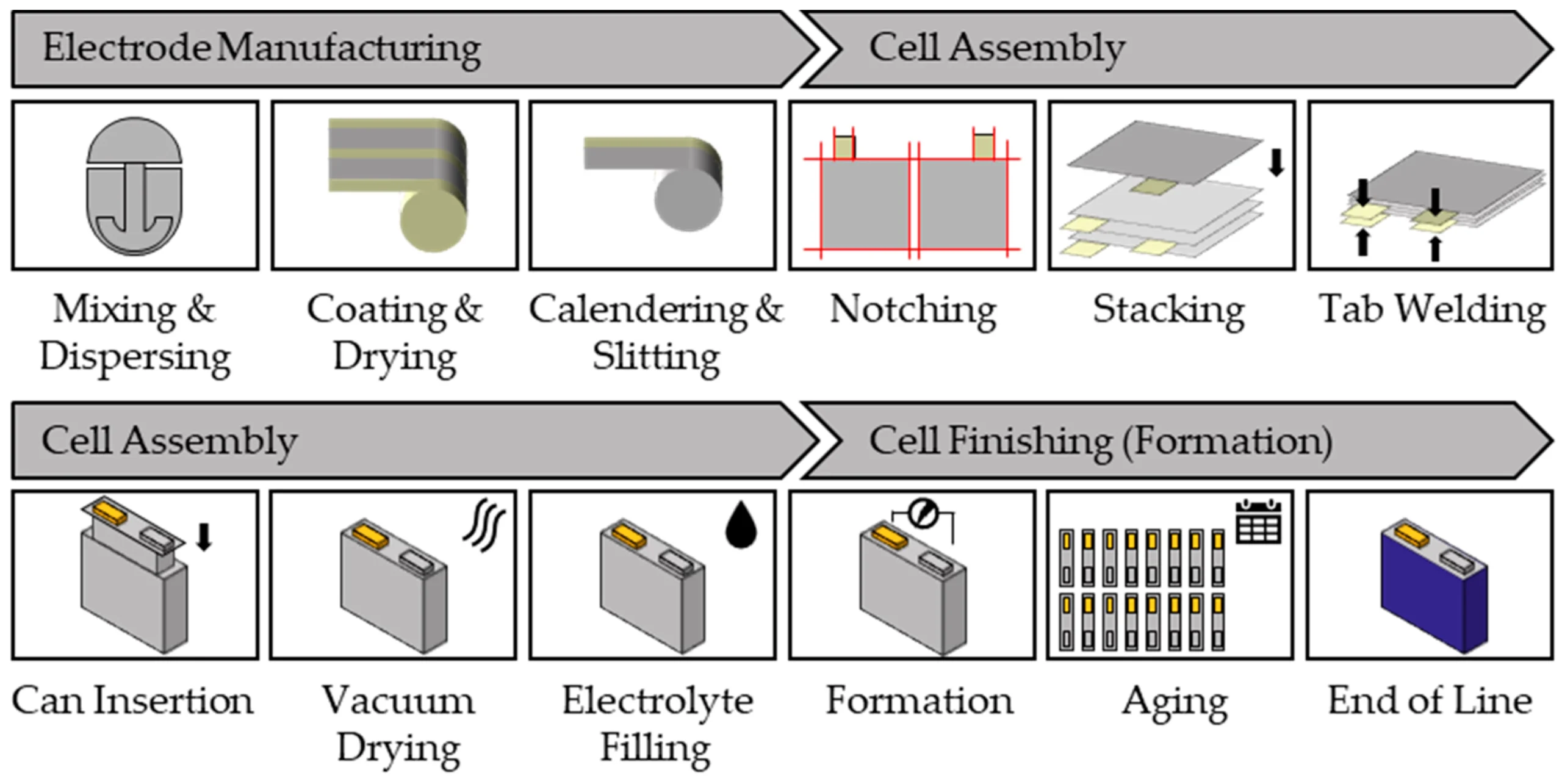Lithium-ion Battery Coating Process
main content
Coating is one of the core processes in the manufacturing of lithium-ion batteries. Its core task is to evenly coat the positive and negative electrode pastes on the surfaces of aluminum foil (positive electrode current collector) and copper foil (negative electrode current collector) to form electrode sheets. The coating quality directly affects the energy density, cycle life, safety and high-rate performance of batteries. Especially for application scenarios with high requirements for power density, such as motorcycle start-stop batteries, the precision control of coating is particularly crucial.
I. Core Principles and Processes of Coating Technology
The coating process is divided into six main links:
Unwinding: The base material (aluminum foil or copper foil) is unwound from the coil and maintained for stable transmission through the tension control system.
Splicing: The base materials are joined end to end to form a continuous band to ensure the coating process is not interrupted.
Tension control and deviation correction: The tension of the base material is adjusted in real time through sensors, and the offset is corrected by an automatic deviation correction system (with an error accuracy of ±0.1mm).
Coating: The slurry is evenly applied to the surface of the substrate through the die head. Common methods include transfer coating and slit extrusion coating.
Drying: The wet electrode sheet is subjected to multi-stage temperature-controlled ovens (such as a gradient temperature increase of 60 to 85℃) to remove the solvent and form a dry film.
Winding: The coated electrode sheets are wound up for subsequent rolling and slitting.
Coating thickness: Usually 50 to 200μm (50 to 150μm is commonly used for the positive electrode of lithium iron phosphate batteries), and the thickness deviation should be controlled within ±3μm.
Uniformity of surface density: It affects the consistency of battery capacity, and the fluctuation range should be less than ±1.5%.
Drying temperature: It is necessary to avoid excessively high temperatures to prevent the electrode plates from cracking or solvent residue.
Ii. Coating Methods and Equipment Technology
Transfer coating: The amount of slurry transfer is adjusted by the coating roller and the scraper. It is suitable for low-viscosity slurries, but the accuracy is relatively low (±5μm). It is mostly used in experiments or small-batch production.
Slit extrusion coating: High-precision coating technology (±2μm), the slurry is extruded from the slit of the die head under pressure, suitable for high-viscosity slurries and large-scale production. Its closed design can reduce environmental interference and is particularly suitable for the manufacturing of power batteries.
Double-sided coating technology: Coating both sides of the substrate simultaneously can increase efficiency by more than 50%, but the issue of synchronous drying on both sides needs to be addressed.
Thin coating design: To meet the high power demand, the coating thickness of the cathode is usually controlled at 50 to 100μm, and the internal resistance is reduced by optimizing the proportion of conductive agent (20 to 50wt.%).
High-speed coating: By adopting the combined technology of twin-screw continuous pulping and extrusion coating, the coating speed can reach 80 to 120m/min, significantly enhancing production efficiency.
Online inspection: Integrated surface density tester (accuracy ±0.5g/m²) and line scan camera, real-time monitoring of coating uniformity to avoid defects.
Iii. Influencing Factors and Optimization Strategies of Coating Quality
1. Material and process factors
The rheological properties of the slurry: The viscosity should be stabilized at 2000 to 5000mPa·s. If it is too high, it will lead to uneven coating; if it is too low, sagging is likely to occur.
Die head design: The cavity structure of the clothes hanger can improve the uniformity of slurry distribution, and the design of the shrink gasket can suppress the edge effect.
Drying kinetics: Segmented temperature control (such as 60, 85, 45℃) combined with hot air convection to balance the drying rate and the bonding strength of the electrode plates.
2. Coating Challenges and Innovations of Motorcycle Batteries
High-nickel material coating: High-activity cathodes such as NCM811 should be operated in an environment with a dew point below 40℃ to prevent moisture absorption and agglomeration.
Application of water-based slurry: For environmentally friendly water-based binders (such as LA133), the drying process needs to be optimized to prevent the electrode sheet from curling or cracking.
Intelligent control: A parameter adaptive system based on machine learning, dynamically adjusting the coating speed and die head pressure to adapt to the characteristics of different batches of slurry.
Iv. Future Development Trends of Coating Processes
1. Equipment upgrade direction
Continuous production: The combination of twin-screw pulping and coating equipment reduces batch differences and enhances consistency.
Precision die head processing: Nano-scale surface treatment technology is adopted to reduce the flow resistance of the slurry and improve the flatness of the coating edge.
Dry coating technology: It eliminates the solvent drying process, reduces energy consumption by more than 30%, and is suitable for the manufacturing of solid-state batteries.
2. Technological innovation
Multi-layer composite coating: The gradient distribution between the active material and the conductive layer is achieved through multi-chamber die heads, optimizing the ion/electron transport path.
Ultrasonic-assisted coating: Utilizing high-frequency vibration to enhance the dispersion of the slurry and reduce the agglomeration of conductive agents.
Conclusion
Coating, as the "first checkpoint" in the manufacturing of lithium-ion batteries, its process optimization and equipment innovation are the core driving forces for enhancing battery performance. In the field of motorcycle start-stop batteries, through thin coating design, high-speed coating and intelligent quality control, the power density and cycle life of the battery can be significantly improved. In the future, with breakthroughs in solid-state batteries and continuous production technologies, coating processes will evolve towards higher precision and lower energy consumption, injecting new impetus into the sustainable development of the new energy industry.

START-STOP LITHIUM battery
Enov start-stop battery is designed to provide excellent performance for high-demand start-stop vaehicles. It adopts the third-generation intelligent lithium platform architecture to achieve technological breakthroughs in core indicators such as cycle life, environmental adaptability and energy density. Compared with the traditional lead-acid battery system, the energy efficiency is increased by 210%, the cycle life is extended by 8-10 times, and the monthly self-discharge rate is controlled within 3%. Enov's unique low-temperature battery technology makes a breakthrough in achieving stable output in the whole climate domain from -30℃ to 65℃, maintaining more than 90% of the effective capacity release under extremely cold conditions (-30℃), and maintaining 90% of the capacity in high temperature environments (65℃).
The start-stop battery series products cover the mainstream voltage platform of 12V/24V/48V, and support flexible configuration of LFP (lithium iron phosphate) and NCM (lithium nickel cobalt manganese oxide) dual-material system. All models adopt modular design to support customization of different model specifications. Enuo engineering and technical team to provide full cycle technical service support, if you need, please contact us.
Other products
UAV BATTERY
LITHIUM ENERGY STORAGE BATTERY
QUICK INQUIRY
FAQ
Access to high frequency technical questions with one click, get accurate answers on product application, after-sales policy and customization process.
Service and Support
Get the latest product specifications, explore professional OEM/ODM customization services, click to open exclusive technical support and production solutions.
Become a Partner
We sincerely invite resources to interconnect, work together for win-win development, and immediately open a new chapter of strategic cooperation!



